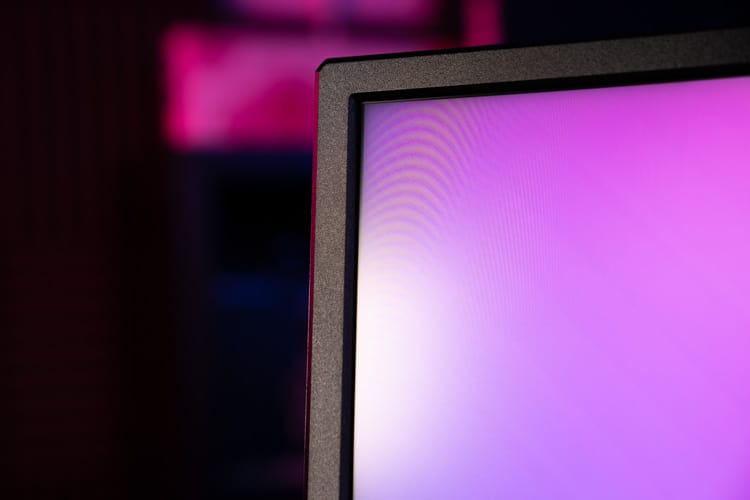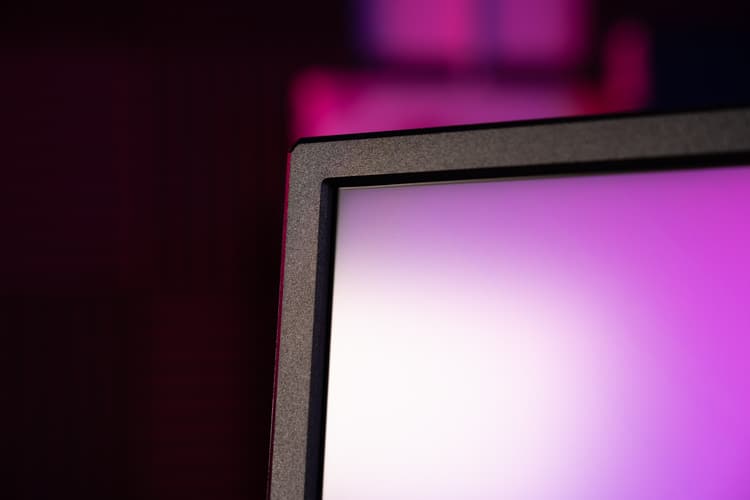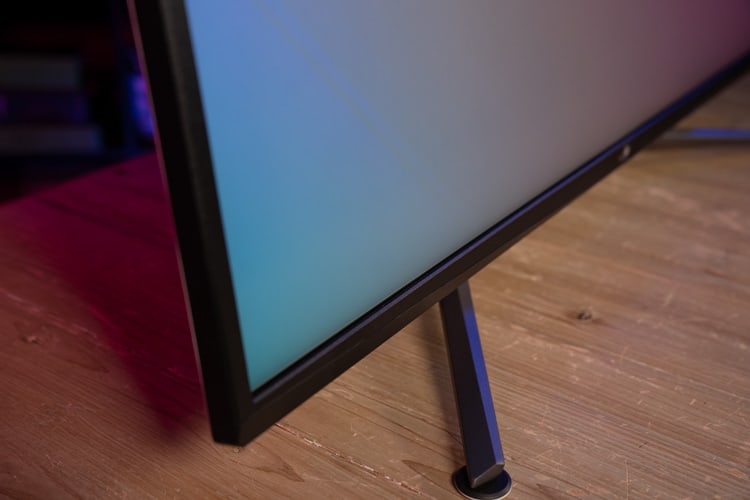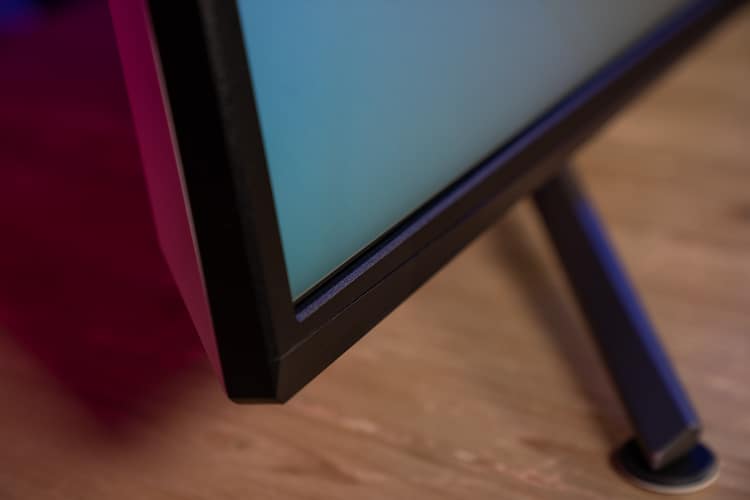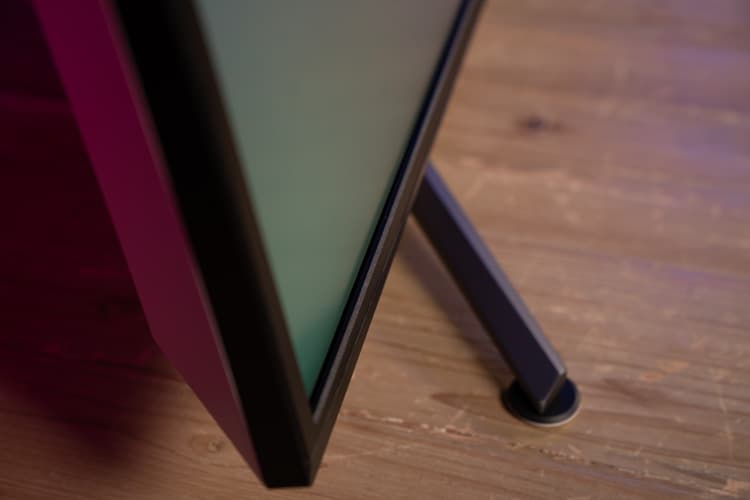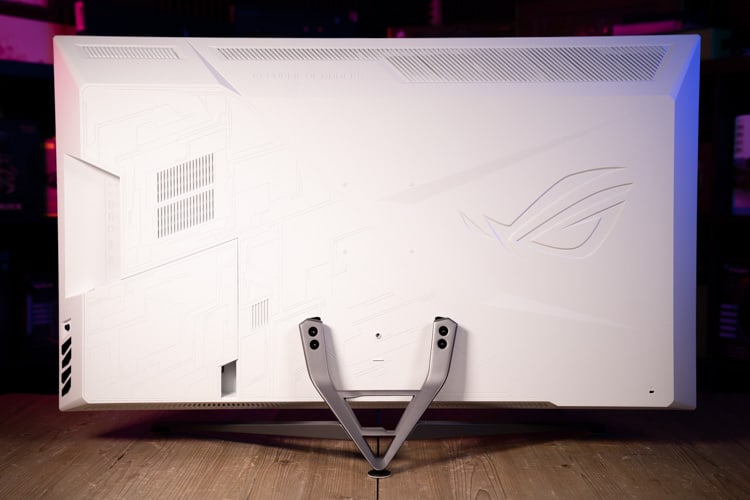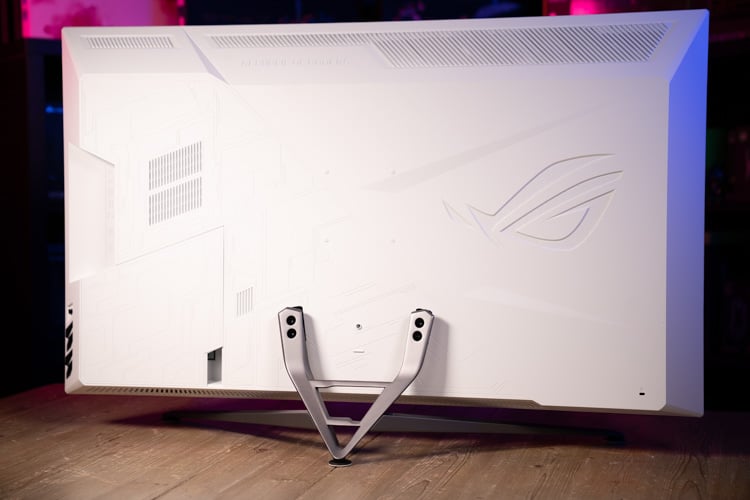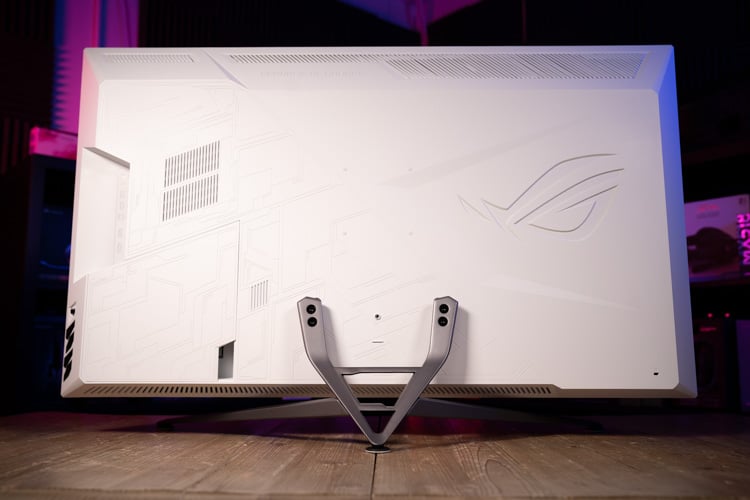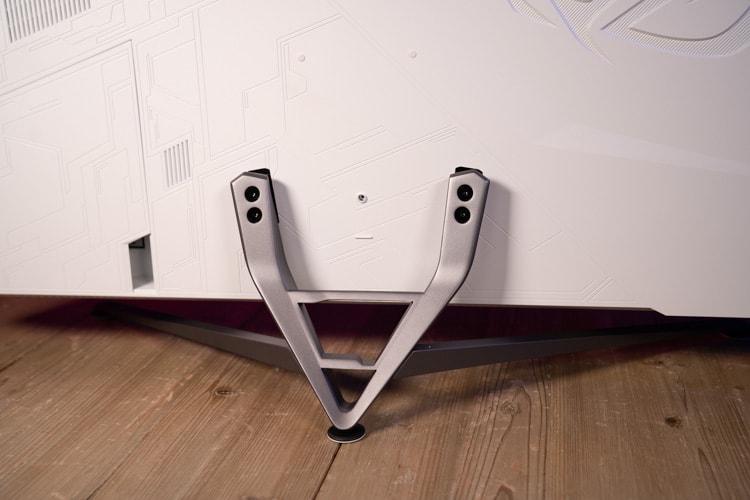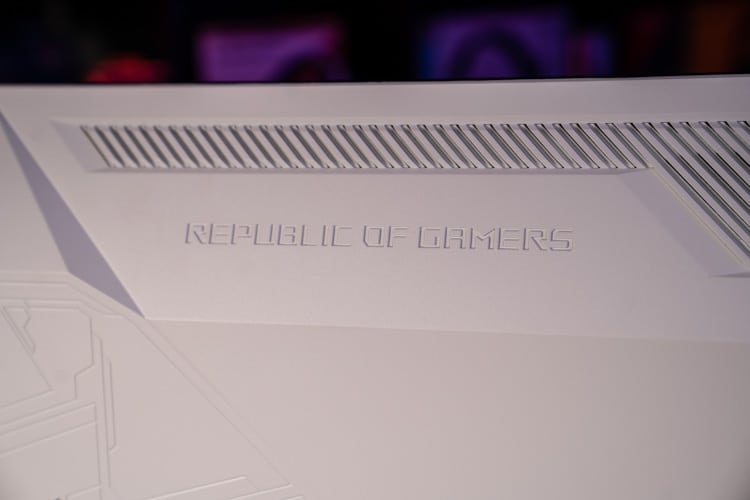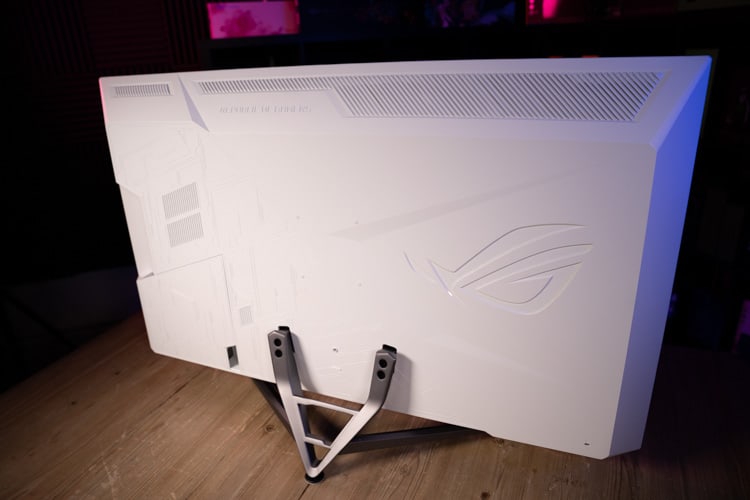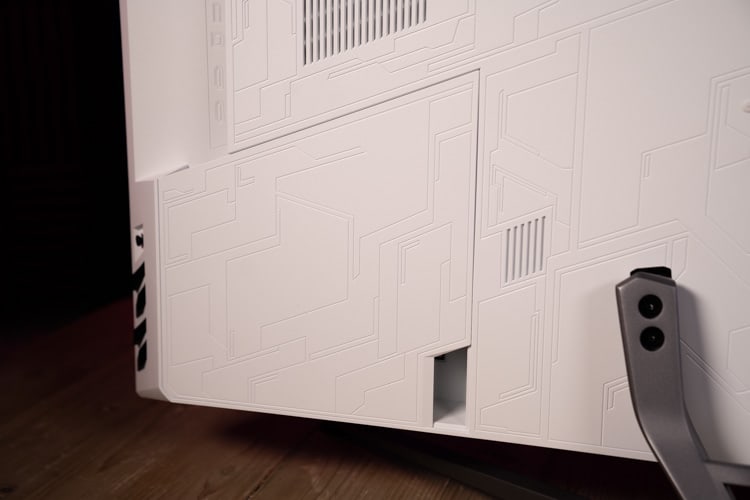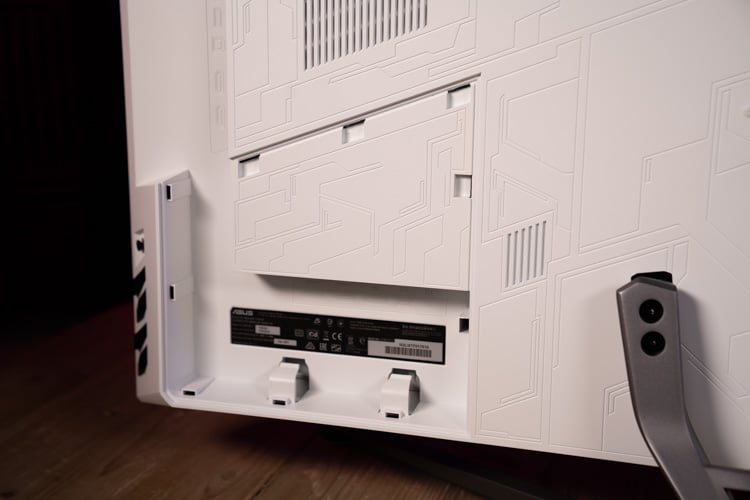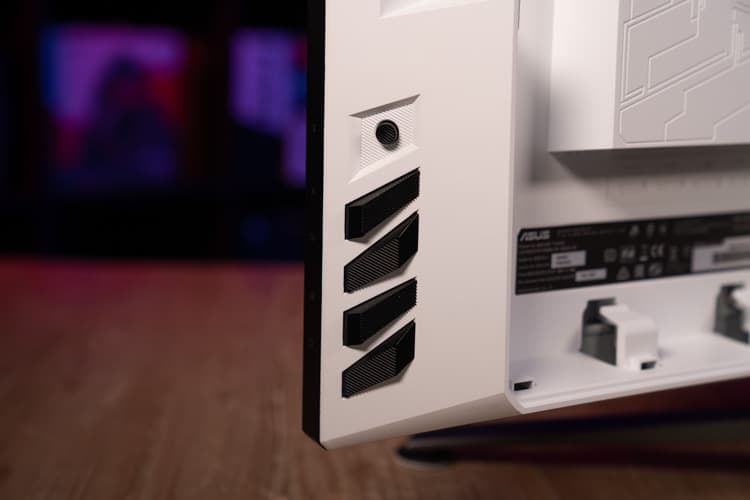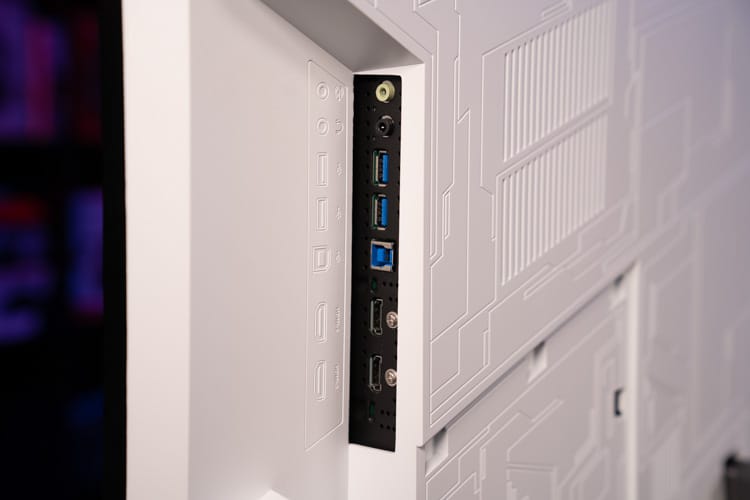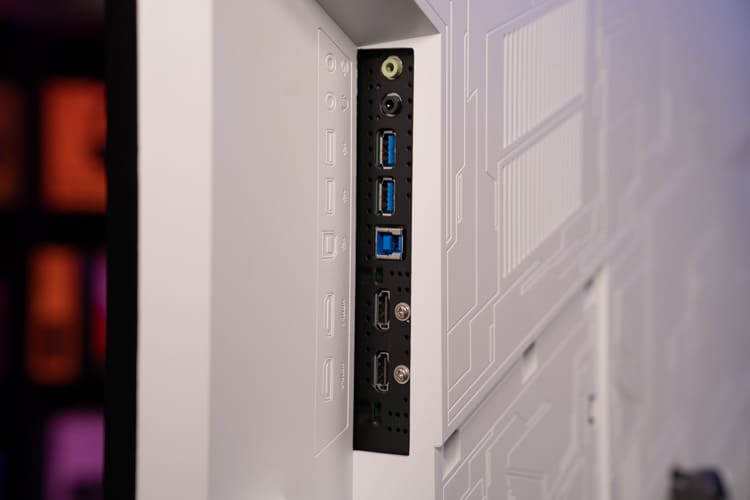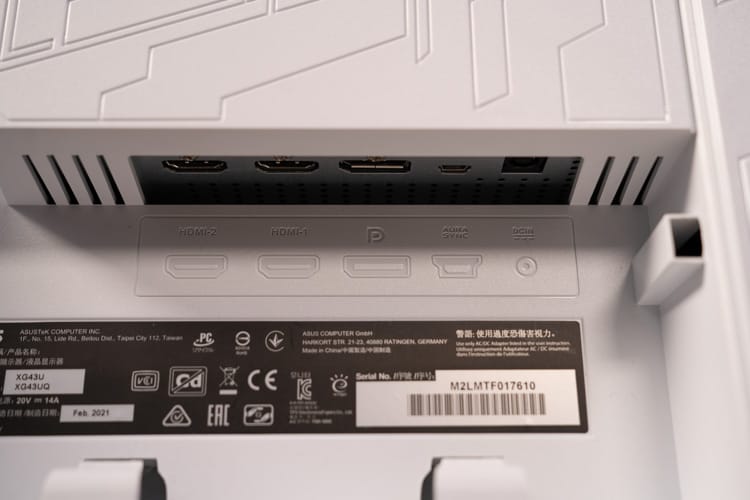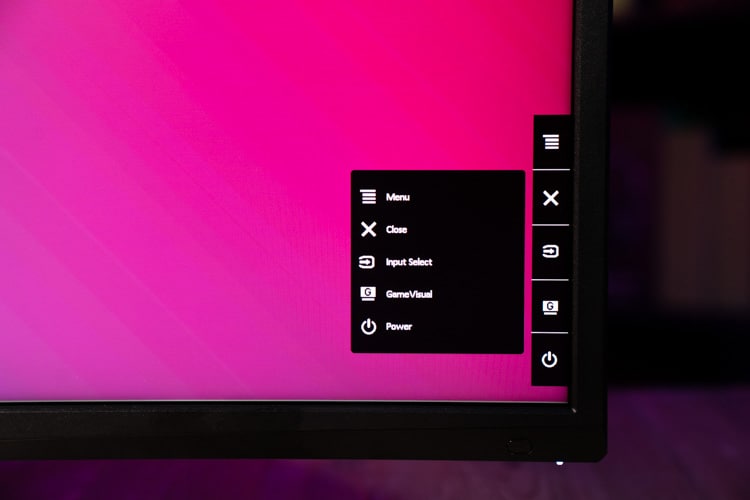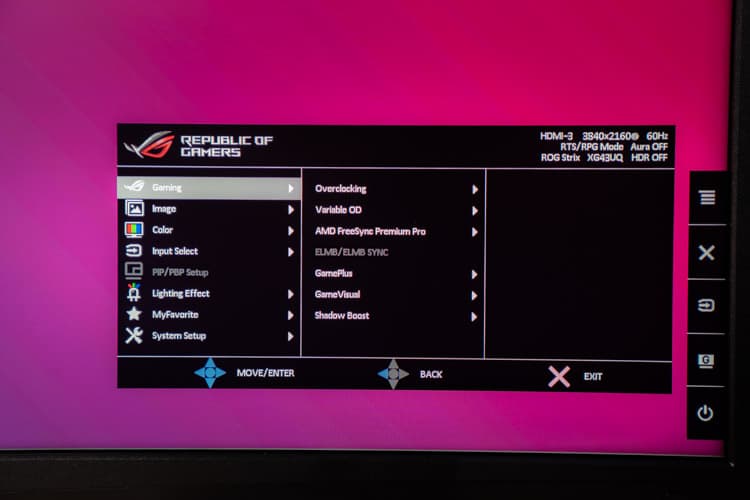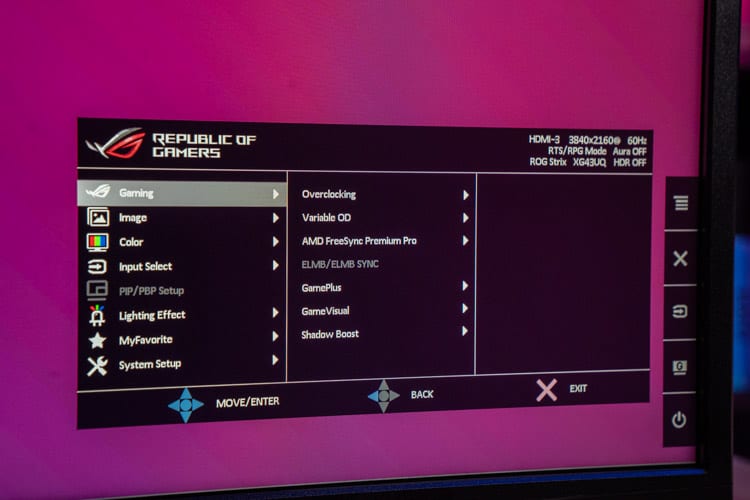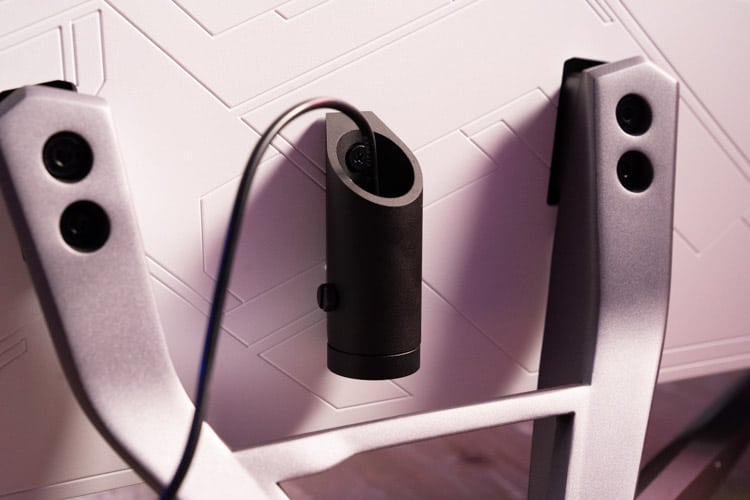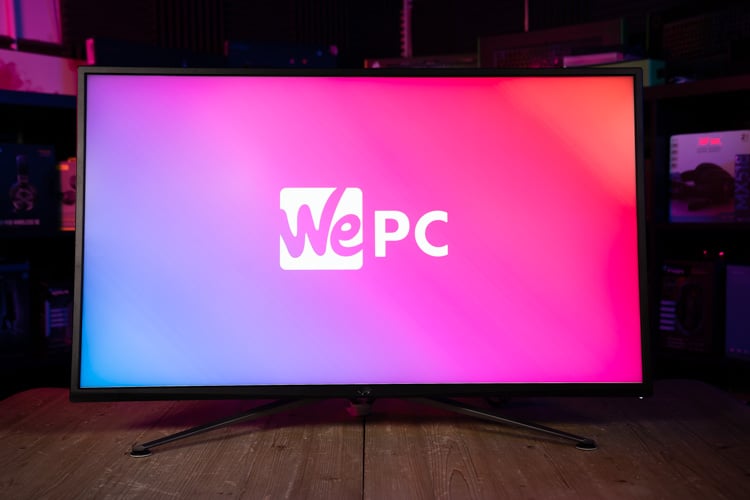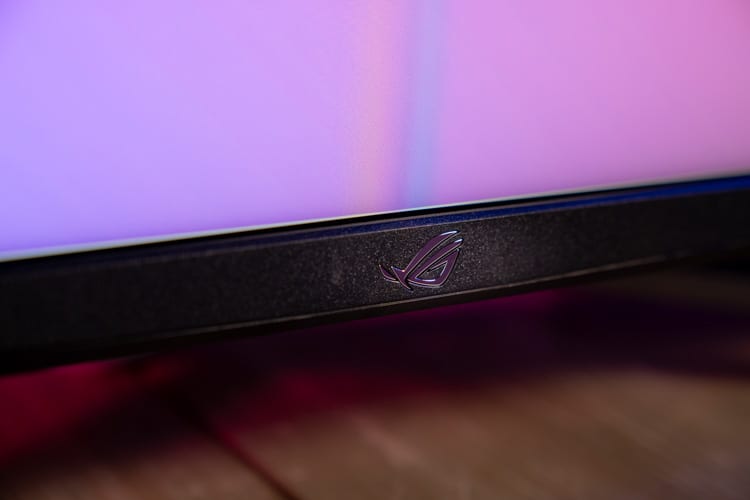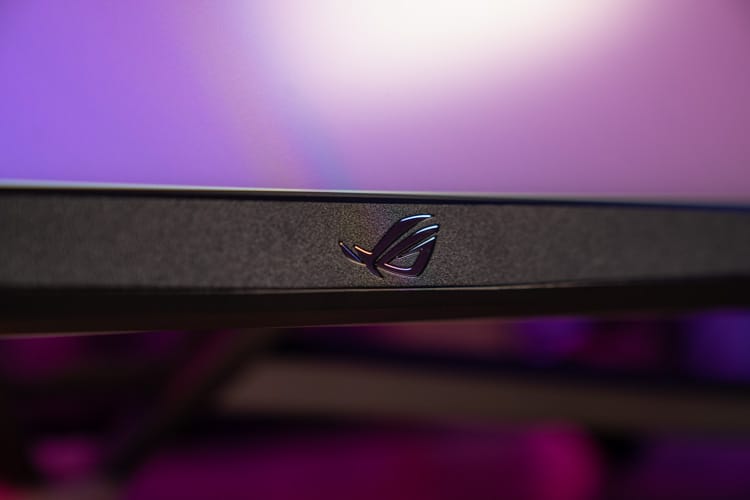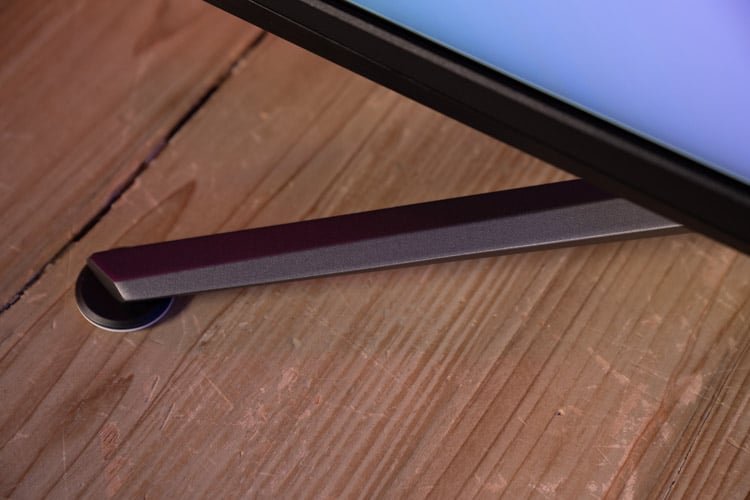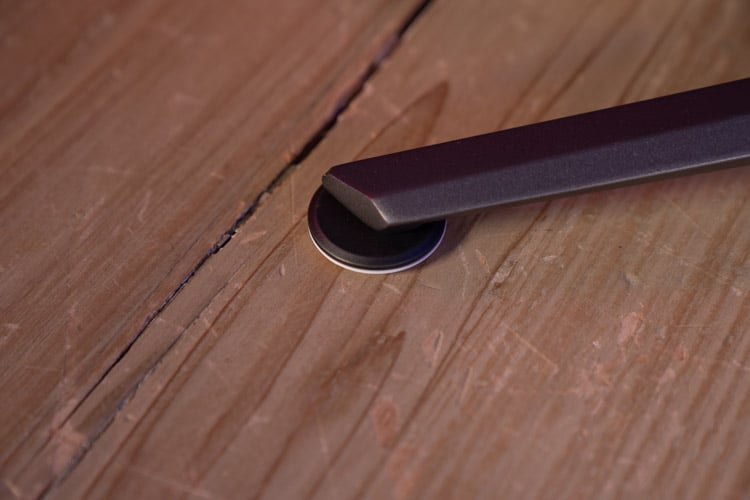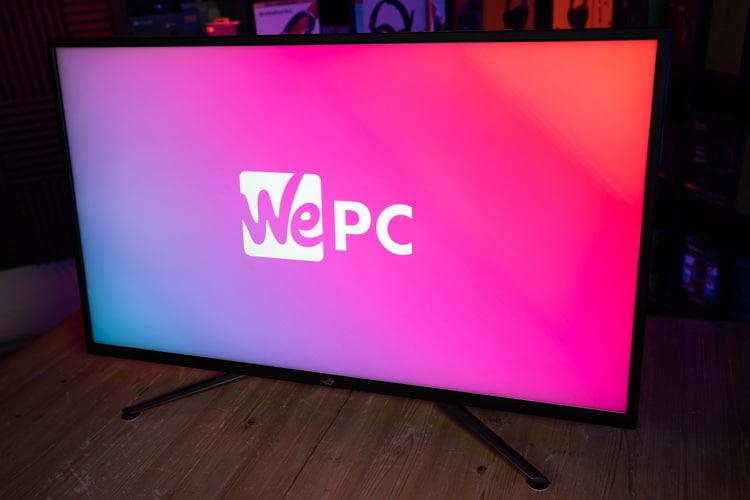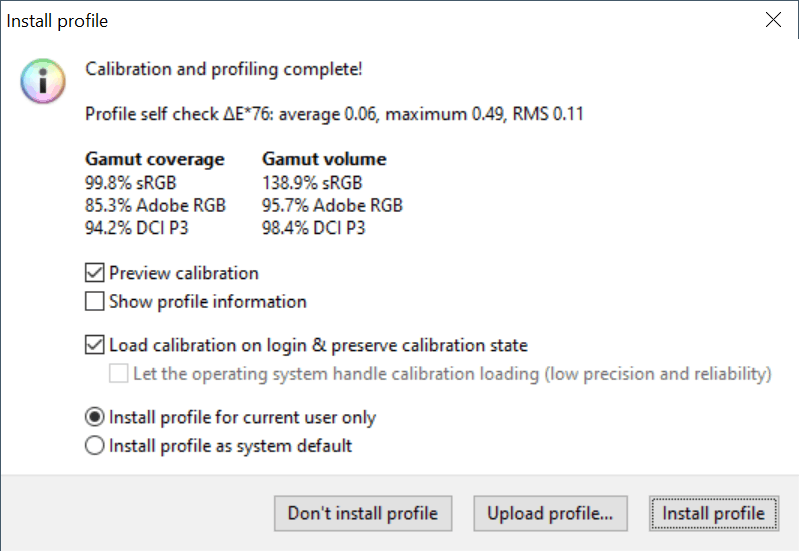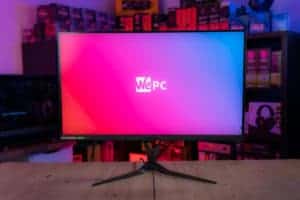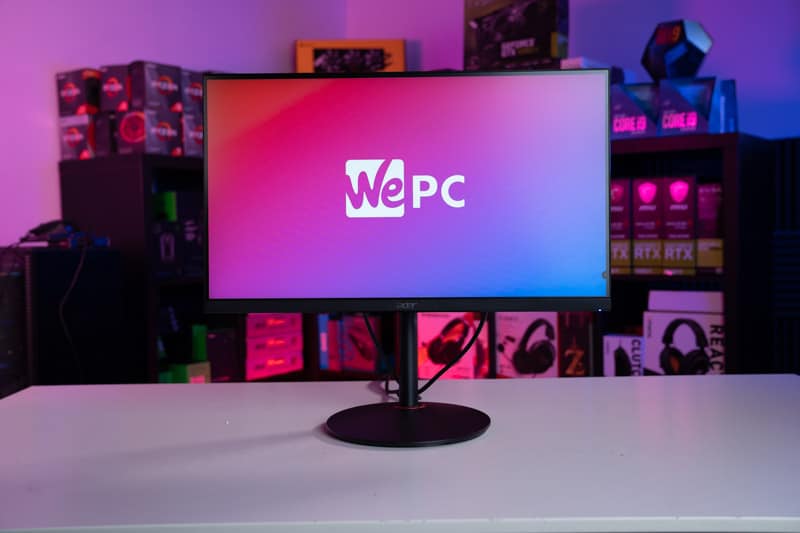ASUS XG43UQ Monitor Review
ASUS's 43.4-inch large-screen gaming monitor could tick all the right boxes for next-gen console gamers!

The age of high-performance large-screen gaming monitors is well and truly underway, with almost every brand releasing one in recent time. The ASUS XG43UQ is arguably one of the best in the big-screen category, offering up a careful balance between screen size and responsiveness – showcasing all the features that any next-gen console gamer would relish.
The new 43.4-inch UHD 4K monitor from ASUS comes equipped with a VA panel that showcases a decent contrast ratio and around 90% DCI-P3 color coverage. More impressively, however, is the 144Hz refresh rate and HDMI 2.1 support it offers – making this monitor the perfect pick for any budding next-gen console gamer. Furthermore, the XG43UQ is also verified to VESA DisplayHDR1000 certification, offers 178/178 viewing angles, and supports 10 bits (8bits + FRC) color depth.
In the following article, we’ll be putting the XG43UQ through its paces to see how it stacks up in build quality, gaming performance, color accuracy, and overall picture quality – comparing it to the similarly priced alternatives as we go.
So, with plenty to get through, let’s waste no further time and dive straight into it!

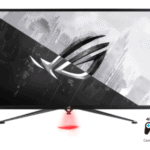
ASUS ROG STRIX XG43UQ: Specifications
- Immersive 1800R curve
- Large Color Gamut
- Great picture quality
- Deep blacks
- Response time isn't the best
- Leans on the expensive side
What's In The Box
The ASUS XG43UQ comes in a fairly large box, showcasing many of the monitor’s main features on the exterior – including marketing material and images of the panel itself.
Inside the box, the monitor comes fully assembled and doesn’t require construction. That being said, the small light projection system does need fitting to the rear if you want to utilize it.
The monitor is protected by large pieces of styrofoam, ensuring no damage occurs during transit. A small accessories box can be found inside the box as well, housing all cables, documents, and the power pack.
Inside the ASUS ROG STRIX XG43UQ box, you will find the following items:
- ASUS ROG STRIX XG43UQ monitor
- DisplayPort Cable
- HDMI cable
- Powerpack + cable
- Quick Start Guide
- Warranty
Design
With specifications out the way, let’s take a closer look at the build quality, design, and mechanical features this monitor comes equipped with.
Design
Starting off with the design, ASUS seems to have done a fairly good job on this monitor. Whilst many of the features lie at the rear of this panel, the front still offers a few nice additions – including the classic ROG logo on the bottom bezel. The bezels do feel a little on the chunky side, but don’t worry, they don’t take anything away from the viewing experience – working nicely with the ‘V’ shaped stand to create a sleek aesthetic. The bottom bezel has a two-tone styling, with a brushed aluminum look merging into a powder coat finish nicely.
The base of the stand is finished with a gunmetal gray powder-coat styling, with two circular feet found at the end of the ‘V’. Whilst this is one of the strangest parts of the XG43UQ’s design, it does offer a slightly more robust framework.
Moving to the rear of the monitor and this is where most of the design features can be found. Oddly, I’ve never really understood why monitor manufacturers make such an effort with the rear of a monitor, it’s not like you’ll ever see it. Anyway, I digress. The back is almost entirely white in color and utilizes ASUS’s classic neo-Aztec etching design.
The ROG logo can be seen on the rear, with ‘Republic Of Gamers’ branding the top of the rear. Overall, the rear has a very sci-fi aesthetic, reminiscent of Imperial Stormtrooper armor or some kind of spaceship’s hull.
Build Quality
The build quality of the XG43UQ feels extremely robust – as you’d expect from a monitor that retails north of $1000. The main body of the monitor is constructed from plastic for the most part, but that doesn’t take anything away from the physical robustness of its shell.
The frame is entirely metal and feels incredibly robust as well. It offers excellent balance thanks to its wide ‘V’ shape. At the rear, users will find a small clip-on panel that covers the power lead and some additional inputs. Whilst it does offer some functionality, it does feel a little on the flimsy side.
That being said, that’s the only area where the XG43UQ would score poorly in the build quality department. Every other section of this monitor feels incredibly well-made.
Panel Coating
Like most modern monitors, the XG43UQ comes equipped with an anti-glare coating with a matte finish – perfect for mitigating both natural and manmade light sources.
Whilst it does do an efficient job at mitigating light, it can pick up some reflections if under particular strong light. However, with high peak brightness, you can get away with using this in those particular conditions. Remember though, this finish is prone to picking up heavy fingerprint marks.
Bezels
As far as monitors go, the XG43UQ does have fairly large bezels – measuring in at 18mm (side & top) by 25mm (bottom). Whilst they aren’t the thinnest in the world, they certainly don’t take any immersion away from the big-screen gaming experience.
Stand
The stand on the XG43UQ is incredibly basic in terms of functionality. That said, it does offer good aesthetics and provides excellent stability that should stand the test of time.
The stand is fairly small but does offer a wide ‘V’ shape that is clearly visible from every angle. In terms of functionality, the XG43UQ only offers tilt adjustments – to be expected from a monitor of this size.
Below are the exact specifications of the stand:
- Forward Tilt – 5 degrees
- Backward Tilt – 10 degrees
- Left Swivel – N/a
- Right Swivel – N/a
- Pivot – N/a
- Height – N/a
No cable management has been provided via the stand. Instead, there is a panel that clips on to tidy any potential cable clutter.


Inputs
ASUS has equipped the XG43UQ with a tonne of inputs with this monitor – not unusual for a panel of this size. Alongside 2 x USB 3.0 ports, 2 x HDMI 2.0, and 2 x DisplayPort inputs, the XG43UQ also offers 2 x HDMI 2.1 ports – making it a fine choice for any next-gen console gamer.
Whilst this monitor does come with a 3.5 mm audio jack, users also have the option to utilize the built-in speakers. That said, they are not nearly as impressive as you might expect.
OSD
The OSD (on-screen display) for the XG43UQ is fairly advanced, allowing users to alter everything from picture quality, responsiveness, and LED lighting. The system utilizes is a mix of buttons and a joystick – found on the rear of the bottom right-hand corner of the screen. The buttons are large and are relatively easy to use – albeit feeling a little on the cumbersome side.
The joystick provides most of the monitors OSD functionality, allowing users to navigate the various menus and easily change settings.
As the XG43UQ has a tonne of color presets and picture altering settings, we’ve listed the main features below:
- Adaptive-Sync technology
- AMD FreeSync Premium Pro
- Auro Sync
- Display Widget
- Extreme Low Motion Blur (ELMB)
- Flicker-Free technology
- GameFast Input Technology
- GamePlus
- GameVisual
- Low Blue Light
- Nvidia G-Sync Compatible
- PBP
- PIP
- Shadow Boost
- Trace Free technology
- Vesa DSC (Display Stream Compression)
Color Accuracy & Picture Quality
Great colors and excellent picture quality are two of the main factors that help create immersion while your gaming. Despite the importance of good color, monitor manufacturers don’t always calibrate the color of their panels to what is deemed accurate within specific color spectrums – sRGB/Rec.709 for example.
We like to test each monitor for color reproduction to see how they would perform in color-accurate scenarios.
Here are the results for the ASUS ROG STRIX XG43UQ.
NOTE: ASUS has pre-calibrated this monitor to an average DeltaE <2.
| Preset | White Point | Black Depth | Contrast Ratio | Average ΔE*00 | Gamma |
|---|---|---|---|---|---|
| IDEAL | 6500K | 0.00cd/m² | Infinite | 0.00 | 2.2 |
| Out The Box | 6090K | 0.0294 cd/m² | 4171.9:1 | 2.62 | 2.21 |
| sRGB | 6499K | 0.0324 cd/m² | 3782.3:1 | 0.98 | 2.25 |
We started the color accuracy performance section by running a preliminary test on the XG43UQ right out of the box. For this monitor, the ‘Racing mode’ preset was installed, setting the brightness to 254 candelas – more than the recommended luminance for everyday usage.
The colors of the XG43UQ in the out the box settings weren’t terrible by any means. Granted, they weren’t the best we’ve ever seen – but they weren’t the worst either. We recorded a white balance of 6090K (slightly below IDEAL) and a decent black depth of 0.0294 cd/m². Contrast ratio scored higher than the rated 4000:1 (4171:1) and gamma was set to 2.21. Average deltaE came in at 2.62, making the RACING Mode preset OK for color accuracy – but not amazing.
I wasted no time and loaded up the sRGB preset to see whether or not the monitor was pre-calibrated to a deltaE of <2. The results were strong in the sRGB preset, showcasing a perfect white balance and good black depth (0.0324 cd/m²). Contrast ratio did dip slightly (3782:1) whilst gamma stayed solid at 2.25. Most impressive, however, was the 0.98 average deltaE. Whilst it wasn’t the 0.85 that ASUS state in their color calibration testing report, it was close enough.
There was a tonne of other presets inside the monitor’s OSD, but few offered accuracy that was close to the sRGB spectrum. That said, we did take some notes on the preset which are below:
Scenery – Scenery Mode offers more vibrance and a more gamma-rich viewing experience. Brightness is definitely increased on this setting, pushing it over the recommended 120 candelas threshold.
Cinema – Cinema Mode gives the XG43UQ a blueish hue that is definitely noticeable when compared to other presets in the monitor’s GameVisual arsenal.
RTS/RPG Mode –This preset offers a similar profile to that of sRGB. The colors feel well-balanced, with orange/red colors popping.
MOBA – Moba was the worst preset I tested, washing out many of the colors and making it look almost black and white.
After testing the various presets, I wasted no time and decided to calibrate the panel – recording color gamut, panel uniformity, and overall color accuracy.
I selected the ‘User’ settings for the calibration, changing the RGB values to 96/96/100.
Here are the results:
| Preset | White Point | Black Depth | Contrast Ratio | Average ΔE*00 | Maximum ΔE*00 | Gamma |
|---|---|---|---|---|---|---|
| IDEAL | 6500K | 0.00cd/m² | Infinite | 0.00 | 0.00 | 2.2 |
| Calibrated Profile | 6495K | 0.0295 cd/m² | 3905.4:1 | 0.37 | 2.06 | 2.22 |
After calibration, we were able to reduce the overall average deltaE quite considerably. The white balance stayed consistent at around 6500K, as did black depth (0.0295). The contrast ratio took a slight dip to 3905:1, whilst gamma resulted in a 2.22 reading. The average DeltaE after calibration read 0.37 – an increase in accuracy of roughly 62%. That being said, we still got a maximum deltaE of 2.06 – which was a little disappointing, but still perfectly acceptable for color-accurate work within the sRGB spectrum.
Overall, the color accuracy of the XG43UQ was pretty decent. I could easily recommend this monitor for gamers that like to play various titles and need a good sRGB preset for color-accurate work.
Panel Uniformity
Panel uniformity is a test we run to check how uniform the luminance and color is across the entirety of the screen. During this test, the center square is used as the reference space. Every other square is then tested to see how far it differentiates from the reference.
In an ideal world, we want every square to be green, meaning it hasn’t broken the differential threshold – something we can set at the start of the test.
Note: results will differ from panel to panel.
The panel uniformity for this display was surprisingly good, with both average deltaE and luminance across the board offering up a decent score. As you can see from the graph above, the left-hand side of the monitor does offer the worst uniformity. However, with an amber score, you aren’t going to notice too much deviation from the center reference quadrant.
Viewing Angles
Viewing angles of this monitor are fairly decent for a VA panel – offering up 178/178 viewing angles. Whilst that is the case, you do start to experience some color shift at more obscure angles – a factor that could potentially be problematic when viewing this monitor from afar.
For the most part, however, viewing angles are decent for this panel technology.


Color Gamut
As part of the calibration process, the DisplayCal will give an accurate measurement of the color gamut the monitor can provide. Below are the results of the color gamut test:
Looking at the color gamut readings for this monitor, you’d have to say it performed pretty well overall. Comparing our results to ASUS’s specifications, the XG43UQ we received offered greater performance. With a 138.9% sRGB gamut volume – equating to 95.7% Adobe RGB & 98.4% DCI-P3 – the XG43UQ far exceeded the 125% sRGB ASUS marketed.
Looking at the physical gamut graph, you can clearly see how far the XG43UQ’s color range exceeds the sRGB spectrum (displayed by the dotted line). Like always, the XG43UQ also falls a little short in the blue area – however, outside of this, it offers a much wider range of color.
Maximum And Minimum Brightness
We ended the color accuracy and picture quality testing by checking the maximum brightness, minimum brightness, and 120 candelas points on this panel. The results are below:
| Brightness | Candelas |
|---|---|
| 100% Brightness | 865.67cd/m² |
| 0% Brightness | 96cd/m² |
| 3 Brightness | 120 cd/m² |
Calibrated Profile
For those who want to use our calibrated color profile, you will find a link below where you can download the zip file.
ASUS ROG STRIX XG43UQ: Gaming Performance
With color accuracy out of the way, it’s time to put the ASUS ROG STRIX XG43UQ through a number of different gaming scenarios to see how it stacks up in pixel response, input lag, and overall responsiveness. Let’s dive straight into it!
Competitive Games
I wasted no time and loaded up one of the competitive titles I usually play when testing a 144Hz (and above) monitor – in this case, it was CS:GO. Whilst this 43-inch beast isn’t necessarily designed for that kind of gameplay, I still ran a quick test to see how it handled fast-moving images, input lag, and general responsiveness. My first impressions were not great. The monitor definitely fell victim to some fairly aggressive ghosting and perception blur. The pixel response time just didn’t seem sharp enough to keep up with the pace of the game – resulting in smearing and general image laziness (if that makes sense).
I tampered with the on-screen display, boosting the OD settings and ensuring the max refresh rate was set whilst playing in both 4K and 2K resolutions. I cranked the Overdrive up to max and refresh rates were set to 120Hz@4K and 144Hz@1440p. However, all this resulted in was some pretty obvious inverse ghosting and whitening of most objects. The happy medium seemed to be Overdrive setting ‘3’ and FreeSync enabled. That being said, the pixel’s response time of the monitor still felt sluggish in these titles.
HDR Performance
As we mentioned earlier, one of the standout features of this monitor is the VESA DisplayHDR1000 certification it comes equipped with. In theory, we should be able to achieve an incredibly accurate and immersive HDR experience in both gaming and general viewing scenarios.
We played a number of different HDR supportive titles on the XG43UQ and all showcased an incredibly immersive experience. That’s the great thing about having a huge 43-inch gaming monitor, it really does offer up levels of immersion that smaller alternatives don’t (or can’t). With VESA DisplayHDR1000 certification, the XG43UQ was capable of showcasing incredibly bright and dark scenes with excellent clarity – and that’s without any true local dimming feature. That XG43UQ is edge-lit and does come with a number of different dimming zones – expected to be within the 8-16 range. However, thanks to a large 4000:1 native contrast ratio, the XG43UQ doesn’t suffer too much from a lack of local dimming.
We played Shadow Of The Tomb Raider with and without HDr and the difference was clear to see. We put the monitor into its max HDR setting (HDR 1000 brightness) and the scene went from arcadey to incredible realistic. Huge amounts of detail could be observed in extremely bright areas – like looking at the sun for example. Furthermore, dark areas now offer a tonne more detail, especially when paired with ray-tracing as well.
I will say that gaming on a PC from close range on this thing can become a little overwhelming after a while – not to mention fairly stressful on the eyes. However, as this is an HDMI 2.1 monitor geared up towards console players, that shouldn’t be too problematic.
We ran a number of other games on this monitor and each displayed a very attractive HDR experience, adding detail, realism, and immersion in abundance.
General Entertainment
Lastly, I decided to use this monitor in a general content consumption scenario – movies, TV, and general browsing. As expected, the monitor performed to an incredibly high standard, providing superb image quality and color accuracy in movies and TV shows. The large contrast ratio and deep blacks of the VA panel helped created immersion when watching movies, especially horror or sci-fi films with dark scenes. We enabled the dynamic dimming feature that helped reduce the blacks down even further – giving SDR content a more HDR feel – albeit not as realistic.
We enabled HDR and ran a few films to see how they looked. The experience was absolutely fantastic, offering up superb levels of detail and clarity. As far as HDR without local dimming goes, this might be one of the best monitors we’ve tested in some time.
Final Thoughts
So, there you have it, our comprehensive review of the ASUS ROG STRIX XG43UQ – a large-screen gaming monitor that really does tick plenty of the right boxes.
The only question left to answer is whether or not we feel it offers good value for money when compared to some of the market’s leading options.
At around $1,300, the XG43UQ lands itself into a pretty competitive price pool, occupied by OLED TVs and other 144Hz HDMI 2.1 panels. So, how does the XG43UQ stack up?
For me, the XG43UQ offered up an excellent gaming experience. The 43.4-inch screen offers great immersion that is only heightened by an incredibly impressive HDR experience. HDMI 2.1 makes this a great option for next-gen console players as it allows 4K gameplay @120Hz, respectively. That being said, the pixel response time on this monitor feels a little too sluggish for fast-paced competitive titles like CS:GO and COD – leaving some fairly obvious smearing and trailing.
Color accuracy was pretty good on this monitor as was the color gamut it provided. The monitor offers extreme levels of brightness, reaching 900 nits in a variety of color presets. HDR was the standout feature for me personally, pairing nicely with the quick 144Hz (1440p)/120Hz (4K) refresh rate for a very smooth and enjoyable experience – in both games and general viewing scenarios. Furthermore, with FreeSync Premium Pro support (G-Sync compatible), gaming is also incredibly lucid – removing screen artifacts, like tearing, from your experience.
Overall, I was pretty impressed with the XG43UQ. Whilst it isn’t ideal for competitive PC gaming, it excelled in almost every console-gaming scenario – adding high levels of enjoyment to any game I played.


WePC is reader-supported. When you buy through links on our site, we may earn an affiliate commission. Prices subject to change. Learn more


